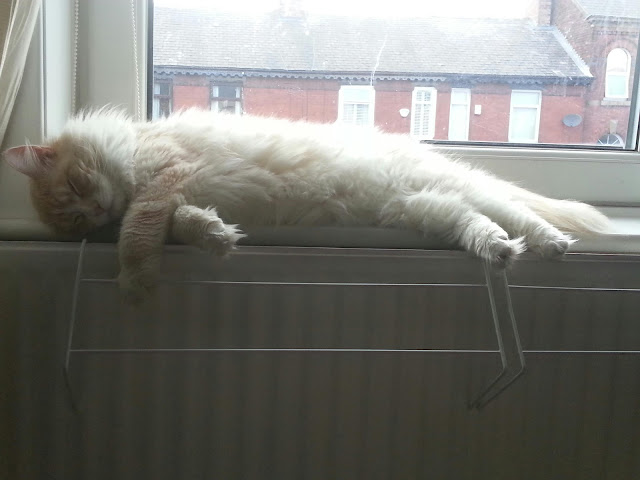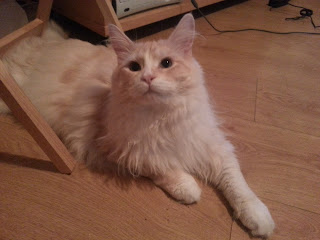What
Is Fibromyalgia?
Fibromyalgia
is a chronic condition of widespread pain and profound fatigue. The pain tends
to be felt as diffuse aching or burning, often described as head to toe. It may
be worse at some times than at others. It may also change location, usually
becoming more severe in parts of the body that are used most.
The fatigue
ranges from feeling tired, to the exhaustion of a flu-like illness. It may come
and go and people can suddenly feel drained of all energy – as if someone just
“pulled the plug”.
Fibromyalgia
is a common illness. In fact, it is more common than rheumatoid arthritis and
can even be more painful. Prevalence of Fibromyalgia: A Survey in Five European
Countries (see www.fmauk.org/prevalence for details) put the
prevalence of FM at between 2.9 and 4.7%. People with mild to moderate cases of
fibromyalgia are usually able to live a normal life, given the appropriate
treatment.
If symptoms
are severe, however, people may not be able to hold down a paying job or enjoy
much of a social life. The name fibromyalgia is made up from “fibro” for fibrous
tissues such as tendons and ligaments; “my”
indicating muscles; and “algia”
meaning pain.
Symptoms
Besides pain and fatigue
fibromyalgia symptoms often include:
- unrefreshing sleep – waking up tired and
stiff
- headaches – ranging from ordinary types
to migraine
- irritable bowel – alternating diarrhoea
and constipation, sometimes accompanied by gas in the abdomen or nausea
- cognitive disturbances including lack of
concentration, temporary memory impairment and word mix up
- clumsiness and dizziness
- sensitivity to changes in the weather
and to noise, bright lights, smoke and other environmental factors
- allergies
Diagnosis
Fibromyalgia is not new,
but for most of the last century it was difficult to diagnose. Part of the
problem has been that the condition could not be identified in the standard
laboratory tests or x-rays. Moreover, many of its signs and symptoms are found
in other conditions as well – especially in chronic fatigue syndrome (CFS).
Two Canadian doctors
developed a way of diagnosing fibromyalgia in the 1970s and in 1990 an
international committee published requirements for diagnosis that are now
widely accepted. Once other medical conditions have been ruled out through
tests and the patient’s history, diagnosis depends on two main symptoms:
- pain in all four quadrants of the body
for at least three months together with
- pain in at least 11 out of 18 tender
point sites when they are pressed. The “tender points”, or spots of
extreme tenderness, are rarely noticed by the patient until they are
pressed.
· What Causes
Fibromyalgia?
·
· Fibromyalgia often
develops after some sort of trauma that seems to act as a trigger, such as a
fall or car accident, a viral infection, childbirth, an operation or an
emotional event. Sometimes the condition begins without any obvious trigger.
The actual cause of fibromyalgia has not yet been found. Over the past several
years, however, research has produced some insights into this puzzling
condition. For instance, it has been known that most people with fibromyalgia
are deprived of deep restorative sleep.
· Current studies may find
out how to improve the quality of sleep and some of the prescribed medicine is
specifically aimed at addressing the lack of restorative sleep.
· Research has identified
a deficiency in Serotonin in the central nervous system coupled with a
threefold increase in the neurotransmiter substance P, found in spinal fluid
and which transmits pain signals.
· The effect is disordered
sensory processing. The brain registers pain when others might experience a
slight ache or stiffness. It is hoped that more research will discover the
cause and result in more effective treatment.
·
C Current Treatment
·
· At the present time
treatment for fibromyalgia aims at reducing pain and improving sleep. In other
words, some of the symptoms are being treated, rather than the condition
itself.
Pharmacological
management
· Over-the-counter
medications may help relieve the pain of fibromyalgia but severe pain may
require the expertise of a pain clinic. It is best to discuss any form of pain
relief with your specialist or GP. It is most important to note that
· medications work for
some people and not others. Pharmacological management of FM in the UK often
involves 'off-label' medications focused on the relief of discrete symptoms
rather than treatment of the condition. A number of drug therapies have shown
effectiveness in randomised clinical trials, leading to approval by the Food
and Drug Administration in America of pregabalin, duloxetine and milnacipran
for the treatment of fibromyalgia.
·
Medications most often
prescribed for fibromyalgia are tricyclic drugs also used to treat depression
although doses for fibromyalgia are much lower than for depression. In some
cases these drugs will help both sleep and pain.
·
However, many people
find available medications either insufficient to control their symptoms or
difficult to tolerate due to a high incidence of adverse effects. Thus, all
medications should be reviewed at regular intervals to monitor their efficacy.
·
Support from family,
friends and other people who have fibromyalgia is extremely valuable to those
who have fibromyalgia. Professional counselling may help some people to cope
with this illness and to take an active part in their own treatment. For more
information on medications please visit www.fmauk.org/medications
·
Learning to manage the
condition seems, so far, to be the most successful way of dealing with
fibromyalgia.
·
A combination of heat,
rest, exercise and reducing stress can enable some people with fibromyalgia to
maintain a productive life.
·
Managing Fibromyalgia
·
The best way to cope
with fibromyalgia is to use a number of techniques that ease the symptoms as
much as possible.
·
Relaxation is one
technique that works really well for almost everybody with fibromyalgia. It
reduces tension in the mind and body right away. The results are calming for
all the symptoms, especially for the pain. Relaxation can be learned from
books, tapes, videos or special courses.
·
Heat is important. A hot
water bottle and hot baths or showers will help reduce pain and banish morning
stiffness. Soaking hands and feet in hot water for a few minutes can ease their
aching. Exercise is the most common prescription for fibromyalgia and Dr
Pellegrino’s section on this has invaluable advice about the form this should
take.
·
Although no particular
diet has been shown to help fibromyalgia, a healthy, balanced diet is important
to provide protein, vitamins and minerals. It is best to avoid or at least cut
down on coffee, tea and alcohol. Some sufferers have a tendency to gain weight
and this can be distressing in itself. If you follow a healthy diet this should
in turn help with your weight control.
·
People with fibromyalgia
can have good days and bad days. On a good day it is important to pace
yourself; overdoing it may simply make matters worse. Rest is also important.
Listen to your body when it tells you to slow down.
Latest Treatment
guidelines
As previously reported in FaMily Magazine,
The European League Against Rheumatism (EULAR) issued the first guidelines for
the treatment of fibromyalgia syndrome (FMS) and published them in the
September 17th On-line
First issue of the Annals of the Rheumatic Diseases.
While these guidelines
are not adopted by NICE (National
Institute for Health and Clinical Excellence) as yet, they can be seen as a
significant step forward in medical treatment.
Specific recommendations
in these guidelines regarding general considerations for management of FMS are
as follows
- Comprehensive evaluation of pain,
function, and psychosocial context is
needed to understand FMS completely, because it is a complex,
heterogeneous condition involving abnormal pain processing and other
secondary features.
- Optimal treatment of FMS mandates a multidisciplinary
approach, which should include a combination of non-pharmacologic and
pharmacologic interventions. After discussion with the patient, treatment
modalities should be specifically tailored based on pain intensity,
function, and associated features such as depression, fatigue, and sleep
disturbance.
Specific recommendations
on non-pharmacologic management of FMS are as follows:
- Heated pool treatment, with or without exercise, is
effective.
- For some patients with FMS, individually
tailored exercise programs can be helpful. These may include aerobic
exercise and strength training.
- For certain patients with FMS, cognitive
behavioral therapy may be beneficial.
- Based on the specific needs of the
patient, relaxation, rehabilitation, physiotherapy, psychological
support, and other modalities may be indicated.
Specific recommendations
on pharmacologic management are as follows:
- Tramadol is recommended for management of pain.
Although other treatment options may include simple analgesics (eg,
paracetamol) and other weak opioids, corticosteroids and strong opioids
are not recommended.
- Antidepressants are recommended for the treatment of
FMS because they decrease pain and often improve function. Appropriate
options may include amitriptyline, fluoxetine, duloxetine, milnacipran,
moclobemide, and pirlindole.
- Tropisetron, pramipexole, and pregabalin
are recommended for
the treatment of FMS because they reduce pain.












